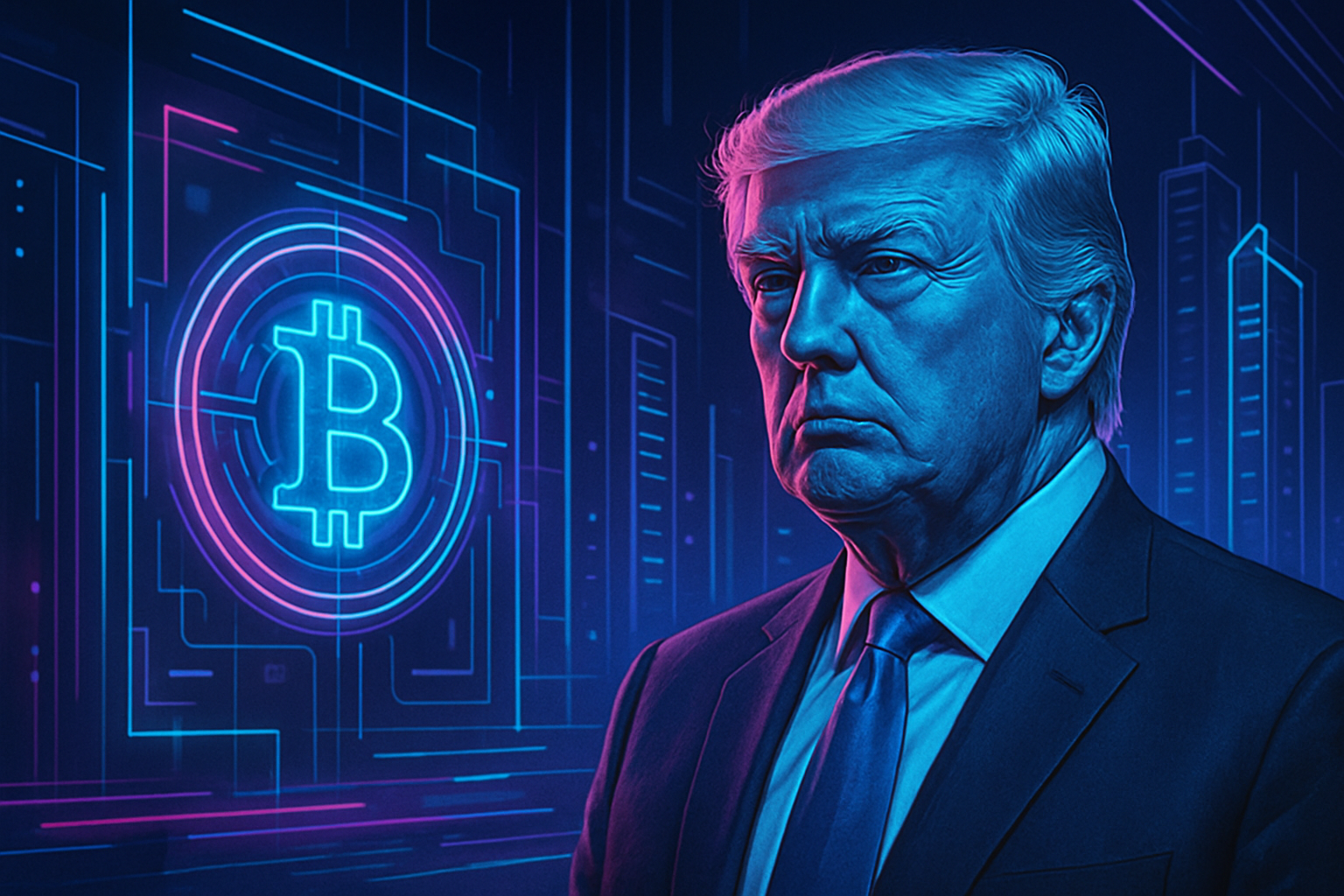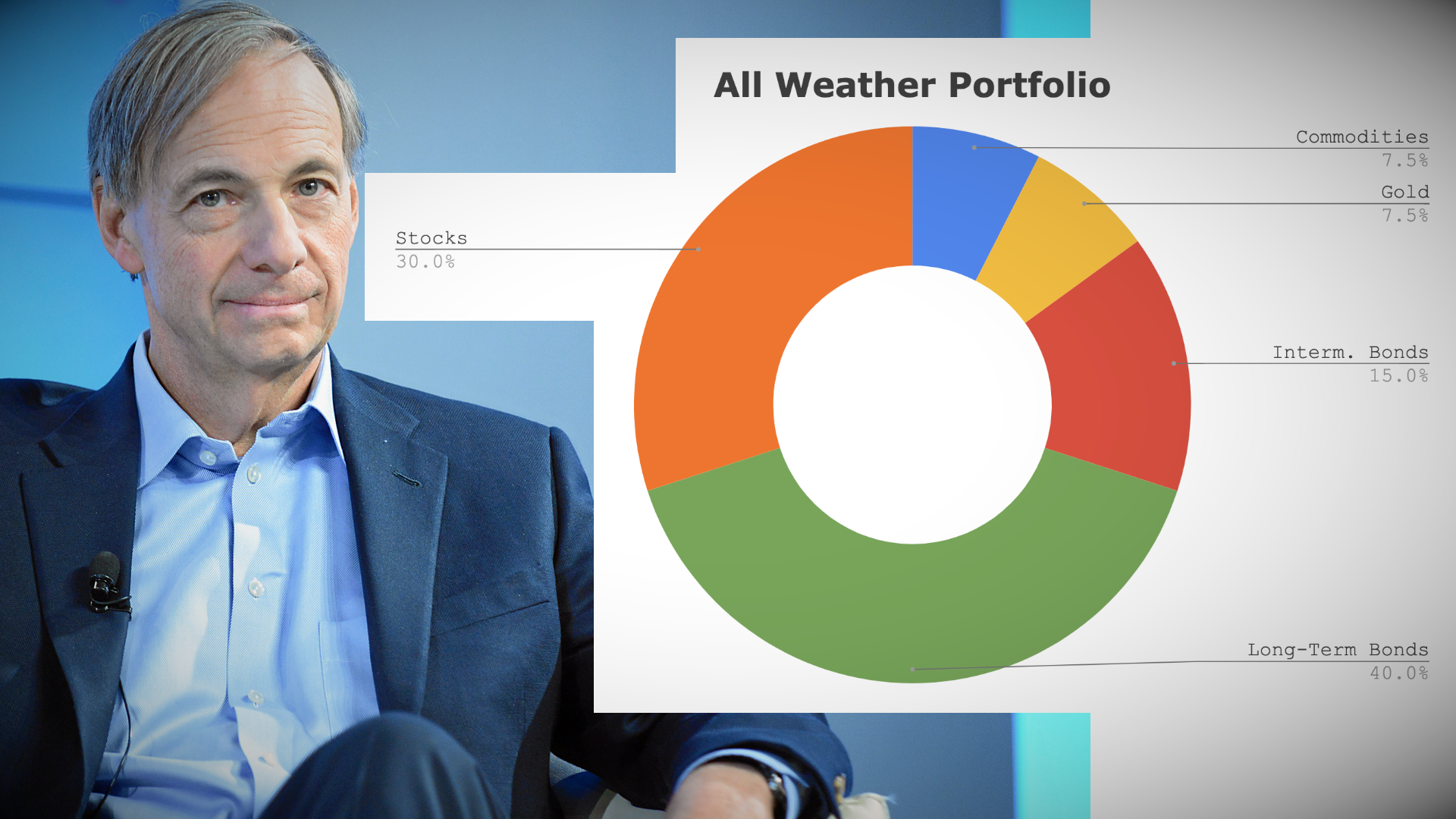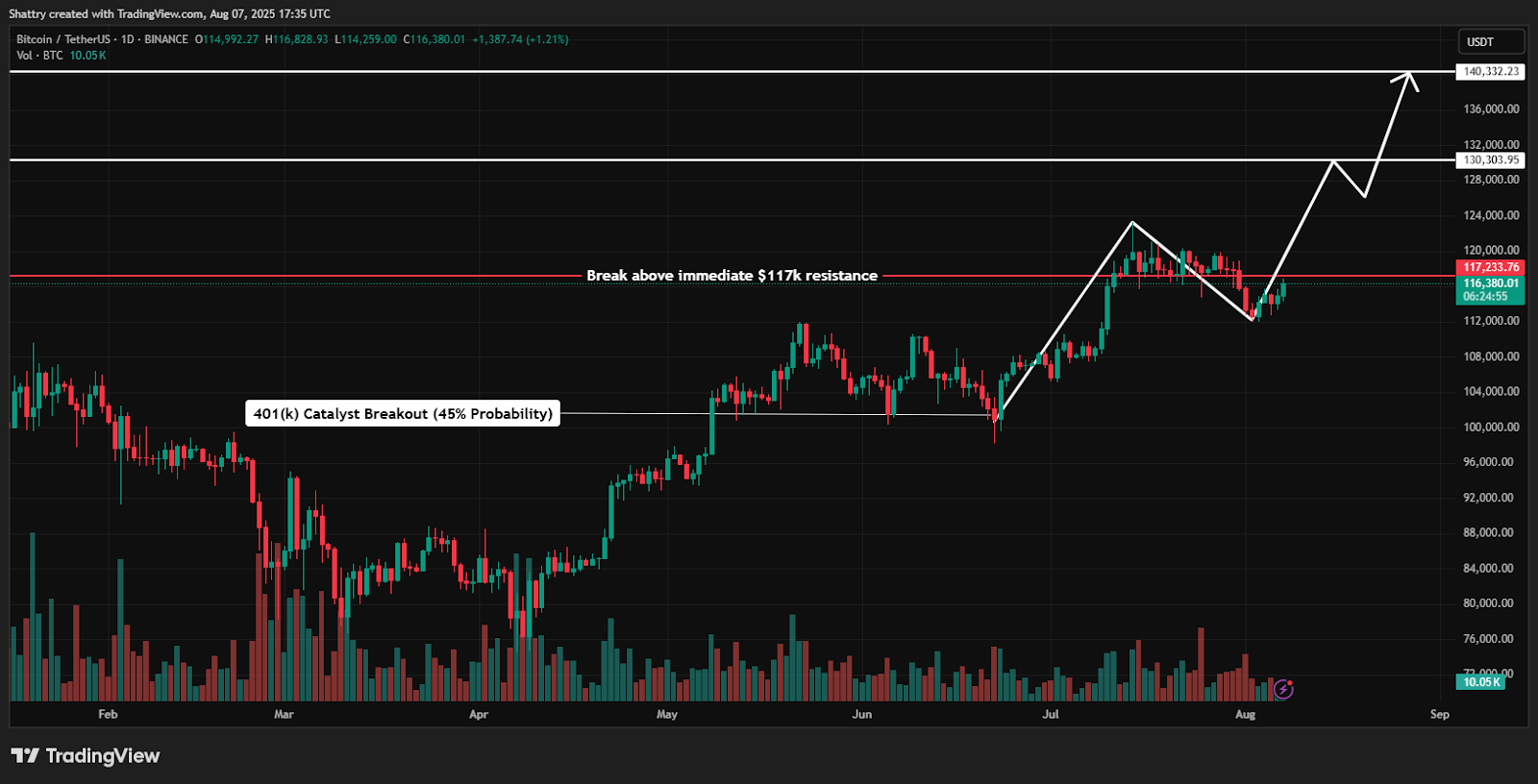
On August 7,2025, President Donald Trump signed a sweeping executive order that could fundamentally reshape how Americans invest for retirement. The move, which directs the Department of Labor to facilitate access to alternative assets within 401(k) retirement plans, has sent ripples across both traditional finance and crypto circles. For savvy retirement planners and forward-thinking investors, understanding the implications of this policy shift is essential.
Trump’s Executive Order: A New Era for Crypto in 401(k) Retirement Plans
The executive order, officially titled “Democratizing Access for 401(k) Investors, ” marks a turning point in U. S. retirement policy. It explicitly paves the way for Americans to allocate a portion of their 401(k) savings into alternative assets such as private equity, real estate, and, most notably, cryptocurrencies like Bitcoin and Ethereum. The Secretary of Labor is now tasked with reviewing and potentially revising ERISA fiduciary guidance to align with this directive, while also collaborating with the Treasury Department and SEC for regulatory consistency.
For years, crypto advocates have argued that digital assets should be accessible within tax-advantaged retirement accounts. Until now, regulatory caution and restrictive guidance made it nearly impossible for most Americans to gain direct crypto exposure through their workplace plans. With this executive order, and the Department of Labor’s decision to rescind prior warnings about “extreme care”: the landscape is changing rapidly.
Bitcoin Maintains Position Above $100,000: What Does This Mean for Retirement Investors?
As of September 27,2025, Bitcoin (BTC) is trading at $109,664, maintaining its position well above the six-figure mark. Ethereum (ETH), meanwhile, sits at $4,027.81. These prices are more than just headline numbers, they represent a new reality where digital assets are no longer fringe investments but potential pillars of diversified retirement portfolios.
According to industry analysis, steady demand from recurring 401(k) contributions could help stabilize crypto markets over time. Matt Hougan of Bitwise has suggested that such inflows may reduce volatility while boosting long-term returns, a tantalizing prospect for investors seeking growth beyond stocks and bonds.
Opportunities, and Risks, for Savvy Retirement Planners
The inclusion of cryptocurrencies in mainstream retirement accounts offers clear upsides: enhanced diversification potential, access to high-growth sectors like blockchain infrastructure, and greater alignment with next-generation wealth trends. For those who have felt locked out of alternative asset classes by institutional gatekeeping or regulatory inertia, this executive order could be a watershed moment.
However, risks remain front and center. Crypto assets are known for their volatility, a feature that can amplify both gains and losses within long-term portfolios. Fees may be higher than traditional index funds due to custody complexities and compliance requirements. Liquidity constraints could also pose challenges if plan providers limit redemption windows or impose additional restrictions on digital asset holdings.
- Diversification: Crypto can act as a non-correlated asset class alongside equities and bonds.
- Volatility: Price swings remain significant; Bitcoin’s current price reflects both optimism and inherent risk.
- Fees and Liquidity: Watch out for higher management costs compared to traditional funds; liquidity terms will vary by provider.
- Regulatory Uncertainty: While Trump’s order sets a deregulatory tone, future administrations or agencies may revisit these rules.
This is not an all-clear signal, it’s an invitation to reassess your risk tolerance and investment horizon before making allocation decisions within your retirement account.
Bitcoin (BTC) Price Prediction for 401(k) Investors: 2026-2031
Forecasts reflect post-Executive Order market dynamics, 401(k) adoption, and evolving regulatory environment.
| Year | Minimum Price | Average Price | Maximum Price | YoY % Change (Avg) | Key Market Scenario |
|---|---|---|---|---|---|
| 2026 | $88,000 | $115,000 | $145,000 | +5% | Initial 401(k) inflows, moderate volatility |
| 2027 | $96,000 | $127,000 | $165,000 | +10% | Broader 401(k) adoption, increased institutional demand |
| 2028 | $105,000 | $142,000 | $188,000 | +12% | ETF/401(k) synergy, regulatory clarity, reduced volatility |
| 2029 | $98,000 | $134,000 | $200,000 | -6% | Potential market correction, profit-taking after rally |
| 2030 | $110,000 | $152,000 | $220,000 | +13% | New adoption wave, halving cycle impact |
| 2031 | $120,000 | $168,000 | $250,000 | +11% | Matured 401(k) integration, global adoption, tech upgrades |
Price Prediction Summary
Bitcoin’s integration into 401(k) plans following the 2025 Executive Order is expected to steadily increase demand from U.S. retirement savers and institutional investors. While volatility and periodic corrections are likely, the long-term trend points to higher average prices, driven by mainstream adoption, regulatory clarity, and the asset’s growing role in diversified portfolios. Average annual gains of 5–13% are projected, with maximum prices reflecting bullish scenarios tied to mass adoption and favorable macro conditions.
Key Factors Affecting Bitcoin Price
- 401(k) and retirement plan adoption rates for crypto assets
- Ongoing regulatory developments and SEC/Treasury guidance
- Market cycles, including halving events and macroeconomic factors
- Institutional inflows and ETF/retirement product launches
- Network upgrades (e.g., scaling, security) and broader Bitcoin utility
- Adoption competition from other digital assets and alternative investments
Disclaimer: Cryptocurrency price predictions are speculative and based on current market analysis.
Actual prices may vary significantly due to market volatility, regulatory changes, and other factors.
Always do your own research before making investment decisions.
Navigating Legal Changes: What Plan Sponsors and Investors Need To Do Now
The Department of Labor’s rescinding of its previous guidance signals a more neutral stance toward digital assets in ERISA-governed plans, but plan sponsors still have fiduciary duties under federal law. Advisors must ensure participants understand the unique risks associated with crypto investing inside tax-advantaged vehicles like 401(k)s.
If you’re considering adding Bitcoin or Ethereum exposure via your employer plan, or advising clients who are, education is paramount. Look closely at plan documents for details on custody arrangements, fee disclosures, diversification limits (such as caps on total crypto allocation), and withdrawal restrictions related specifically to digital assets.
You can read more about how these legal shifts might affect your own portfolio here: How Trump’s Executive Order Could Open the Door For Crypto in 401(k)s.
Plan sponsors and HR departments must also revisit their fiduciary processes. It’s not enough to simply add a crypto option; due diligence, ongoing monitoring, and robust participant education are now table stakes. Expect more scrutiny from both regulators and plan participants, especially as the first wave of crypto-enabled 401(k) products roll out over the coming months.

How to Strategically Approach Crypto Diversification in Your 401(k)
With Bitcoin at $109,664 and Ethereum at $4,027.81, the temptation to chase returns is real. But prudent retirement savers know that allocation matters more than speculation. Consider these actionable steps:
Key Steps to Add Crypto to Your 401(k)
-

Understand the New Regulatory Landscape: Familiarize yourself with the latest guidance from the U.S. Department of Labor and SEC regarding alternative assets in 401(k) plans, following Trump’s August 2025 executive order.
-

Assess Your Risk Tolerance and Time Horizon: Cryptocurrencies like Bitcoin (currently $109,664) and Ethereum ($4,027.81) are volatile. Consider your retirement timeline and risk appetite before allocating funds.
-

Allocate a Prudent Portfolio Percentage: Experts often suggest limiting crypto exposure to a small portion (typically 1-5%) of your total 401(k) portfolio to manage volatility and potential losses.
-

Monitor Fees and Custody Arrangements: Compare management fees and custody solutions from established providers like Fidelity Digital Assets and Coinbase Institutional to ensure secure storage and cost efficiency.
-

Stay Informed on Market and Regulatory Updates: Regularly track price movements (e.g., Bitcoin at $109,664; Ethereum at $4,027.81) and evolving regulations to adjust your strategy as needed.
Start Small: Most plans will introduce caps (often 5-10%) on total crypto exposure, use this as a guardrail while you learn how digital assets behave within your broader portfolio.
Diversify Intelligently: Don’t let Bitcoin or Ethereum crowd out core holdings like index funds or target-date funds. Crypto should complement, not replace, traditional assets.
Monitor Fees Closely: Digital asset management fees can be double or triple those of passive stock funds. Ask providers for clear disclosure on all costs before allocating.
Stay Informed on Policy Shifts: The deregulatory tone may not last forever. Bookmark trusted resources and stay engaged with updates from the Department of Labor and SEC.
The real innovation here isn’t just about adding Bitcoin at $109,664 to your retirement plan, it’s about opening the door for Americans to access new asset classes that were previously off-limits inside tax-advantaged accounts.
What’s Next? Ongoing Evolution in Crypto Retirement Rules
The landscape is shifting quickly. Some providers are already piloting diversified digital asset baskets for workplace plans; others are waiting for further regulatory clarity before launching full-scale offerings. Expect new guidance on custody standards, valuation methods, and participant disclosures as the industry adapts.
If you’re an early adopter, or advising clients who are, now is the time to build a framework for responsible allocation. Document your rationale, set rebalancing rules, and prepare for volatility spikes that can test even seasoned investors’ resolve.
Your Checklist for Crypto-Ready Retirement Planning
This executive order is a wake-up call: Retirement investing is entering a new era where adaptability trumps tradition. By staying informed and disciplined, you can harness this policy shift without losing sight of long-term goals.
For deeper analysis of how these legal changes could reshape your retirement strategy, see Trump’s Executive Order: What Opening the $12.5 Trillion 401(k) Market to Crypto Means For Your Retirement.






